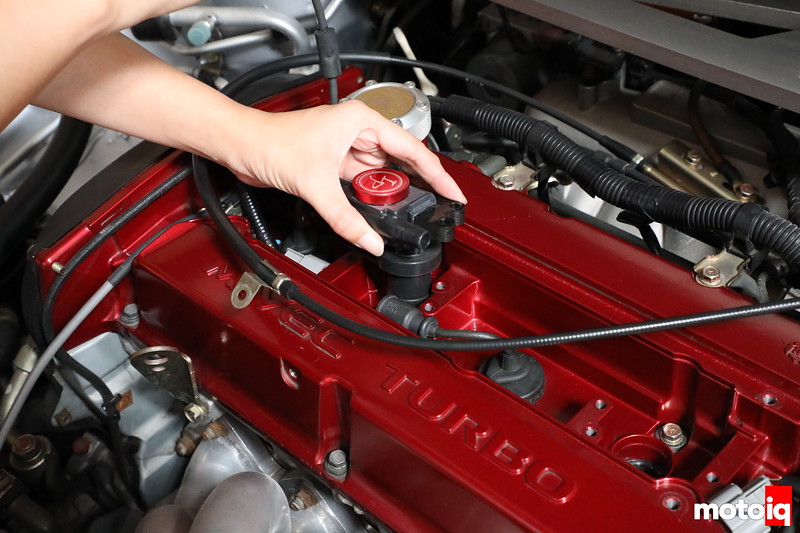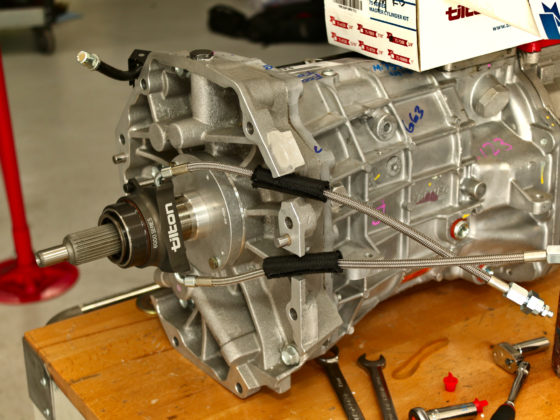Project Evo IX has been sitting dormant for a few years now. A lot of it is because we have the car working so well that we didn’t want to take it apart for more stuff! However, we are about to embark on another round of modifications to the engine in upcoming articles and we want to lay in some groundwork first to support some additional power.
The stock Evo 4G63 engine has a somewhat weak ignition system. It is semi coil on plug with two coils firing directly on two cylinders but also with two short runs of plug wires from the coils that fire the adjacent cylinders. The ignition is a somewhat crude waste spark system which means when the coil discharges, it sparks both of its cylinders. One cylinder is on the compression stroke and is fired but the other spark is “wasted” as it fires on overlap.
On more modern engines, the coils sit right on the plugs so voltage isn’t wasted going down long lengths of primary wire. The ECU fires the coils sequentially so each coil has the maximum dwell time to recharge in between firing. On the 4G63 with its waste spark system the coils only have half the time to saturate as they would with a modern direct fire system.
Although the 4G63’s waste spark system is not as good as a direct fire ignition, it is tons better than a single coil and distributor old systems that are the rule for older engines. Direct fire systems are available for the 4G63 but they require an aftermarket ECU if you want to avoid waste spark firing. We wanted to keep our stock ECU flash tuned OEM ECU for now so we wanted something compatible with that.
When running on water injection we would often get a misfire at full throttle unless the engine was very thoroughly warmed up which would take quite a while on our well-cooled engine which has an ARC radiator, oil cooler, and intercooler. On a cold day, it could take up to 20 minutes of running before the engine was hot enough to vaporize the water enough to avoid misfire.
Our engine also has Cosworth M2 cam which gives the car a lumpy idle. Also with ECU flash, you have limited control of idle speed control and the cold start enrichment curve so we have not been able to successfully tune for a better idle other than with cam timing control. Thus our cold idles isn’t super stable and there is a lot of 8-stroking overrich idle going on. Our hope is that a stronger ignition would help clean this up.

Ignition Projects coils are unique in that they not only have double the spark energy of the stock coils but they also fire multiple times for each ignition event. In fact, they fire with double the spark energy, 8 times for each triggering event! That give the fuel-air mixture 8 chances to ignite vs only one via the stock ignition!
The Ignition Projects coils give this capability internally in the coil itself so there is no need for mounting and wiring any external magic boxes or alter the vehicles wiring in any way. The Ignition Projects coils are also designed to be low noise so, despite the extra power and multiple sparks, there will be no interference with other vehicle electronics and audio components. The first is critical with modern cars with many integrated digitally controlled parts.






8 comments
Nice write up and looking forward to more Evo articles
Just to add, I have done a coil on plug upgrade on a somewhat stock Evo 8 using Toyota coils and the difference in engine “smoothness” was surprising.
How did you trigger the coils?
Is the dwell time the same as factory? They look like they would bolt to my suzuki HT81S engine, but I dont have a standalone, so what should I check before switching my ignition setup with something else? I have heard of damaged ecus from switching to different spec coils, but nothing concrete.
Since we are only switching things on the coil side the dwell time is the same. You can damage your ECU if your coil impedance is way different but in this case, the IP coils are application specific and they will not hurt your ECU.
That is very useful information, thank you Mr Kojima.
Mike,
Why didn’t you choose the Spoolinup COP 4 coil setup? Did you know about it before choosing the IP? http://www.spoolinup.com/New-Coil-COP_p_22.html
Thanks for the article.
2006 Evo IX
Mike,
Why didn’t you go with the 4 coil pack from Spoolinup?
http://www.spoolinup.com/New-Coil-COP_p_22.html
Thomas Reynolds
’06 Evo IX
That looks like a pretty good system using the Honda pencil coils but it doesn’t have the multi-spark capability of the IP coils.